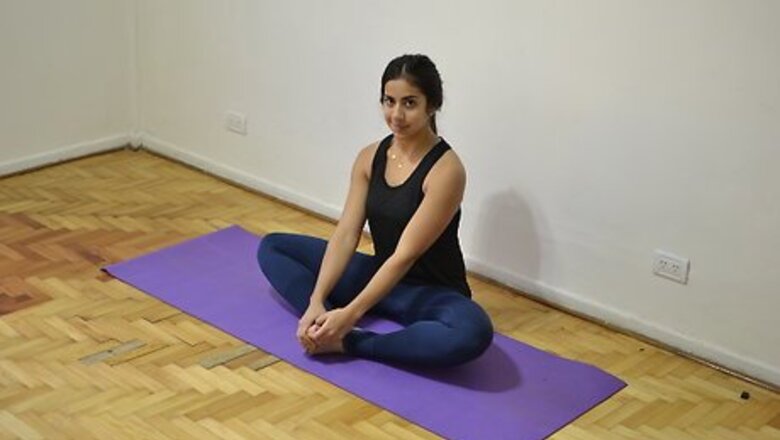
views
Performing a Split

Wear flexible clothing. When you do your first split, you're probably (understandably) focused on possible injury or discomfort you might experience, so it's easy to forget that you can shred certain types of clothing by doing a split. Don't put yourself at risk for an embarrassing rip! Wear loose or flexible clothing, such as the following suggestions: Athletic shorts, leggings, track pants, skirt, or sweat pants. Loose t-shirts or tank tops. Skin-tight elastic material - spandex or lycra leotards, dance clothes, etc. Martial arts clothing - karate gi, etc. Socks or tights. You may also go barefoot.

Warm up. Like with any athletic activity, warming up before doing splits can help you focus, decrease your discomfort, and prevent injury. To warm up, you'll want to raise your heart rate, then perform a few light stretches. To raise your heart rate, perform some light cardiovascular activity. 8-10 minutes of jogging, cycling, or jumping rope should suffice - whatever is enough to raise your temperature and heart rate.

Stretch. Next, do a few stretches - try to focus on the muscle groups that are most important for doing splits, like your hamstrings, hips, and, if you want to attempt a side-split, groin. You don't need to run through your entire stretching routine like you would if you were trying to build flexibility to be able to do the splits in the first place, as these stretches are intended solely as a warm up. In fact, once you can do it confidently, doing a split itself can become part of your stretching routine.
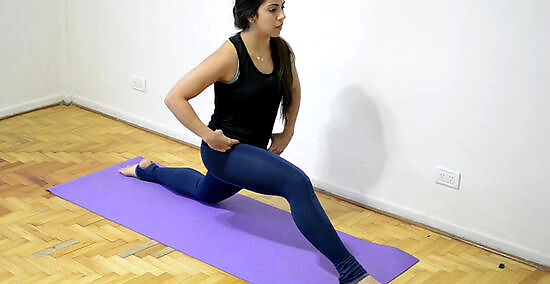
Get into position. When you've warmed up and stretched, get into a stance that allows you to transfer to a split with ease. This stance will differ based on whether you are attempting a front split or a side split. See below for the distinction: For a front split, lower yourself into a kneeling position with your back straight. Stretch your preferred leg forward in front of you. Your front knee should be straight and your back knee bent so the shin on that leg is resting on the ground. Make sure your back knee and foot are facing the ground and NOT to the side. This is a common mistake and can result in severe injury. For a side split, stand up straight, then take a wide straight-legged stance. Spread your legs slightly more than shoulder-width apart. Relax. Take deep breaths. Think of peaceful, relaxing thoughts. Try not to hold any tension at all in any of your body's muscles. Believe it or not, there is evidence that relaxation techniques can make a measurable difference in a person's flexibility, especially if they become a habitual part of a stretching routine. Take a deep breath in and as you let it out go down a little bit farther.
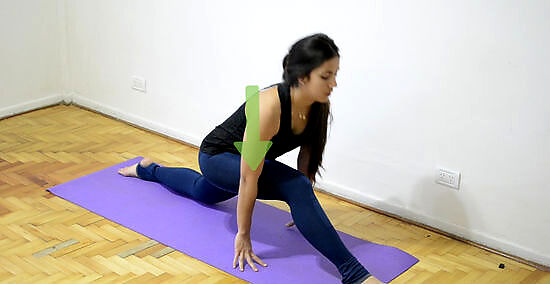
Begin to lower yourself down. When you're warmed up, relaxed, and ready, slowly and gently lower yourself into either the front split or side split. Go down as far as you can without any major pain or discomfort - if you feel anything beyond mild "flexing" discomfort, stop your split attempt. Have your hands ready to brace yourself as you get close to the floor - it's very difficult to support your entire weight with your legs and keep them relaxed at this point. If you're attempting a front split, place your hands on the floor and slowly slide your front leg forward until your reach the floor. Point your back toes, as keeping them flexed can prevent you from sliding down properly. You should never excessively twist your lower back. If you're attempting a side split, allow your legs to spread out to the sides. You will probably need to lean forward and support your weight on your hands at some point. Don't overdo it. Forcing yourself into a split can cause painful injury that will decrease your ability to flex. Be satisfied with gradual progress. If this means that, for instance, on a given day, you can only go down to a foot off the ground while feeling a decent stretch, don't go any further.

Cautiously continue to the floor. Surprisingly, doing it on a mattress can help you get down further, and also help you get the feel of doing the splits. When your legs have reached a 180 degree angle and your pelvis is resting on the ground, congratulations - you've done the splits! On your first attempts, you probably won't be able to do this all the way. This is normal. Don't try to push yourself past your point of maximum flexibility or to "bounce" to get slightly better results. Instead, use the opportunity to stretch and try again later.
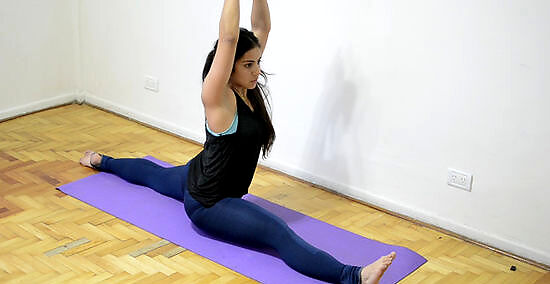
Hold your position. When you've performed your splits or reached the limit of your flexibility, try to hold this position for about 30 seconds.Then, get up, stretch, and repeat as much as you wish (alternating legs if you do front splits). Only do splits as often as you're comfortable, never fighting against the pain to do "just one more." Or you can try doing some other skills that involve the splits.
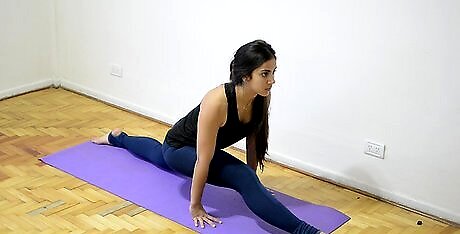
Be patient. Never attempt to push yourself past your limit. Doing the splits requires lots of time and plenty of patient practice. Increasing your flexibility can take months. Since this is a process that happens gradually over time, you may not notice improvement every time you attempt the splits. Stick with it! You will get better as you practice every day. Keep in mind that the splits are not a comfortable position even for most people who have them.
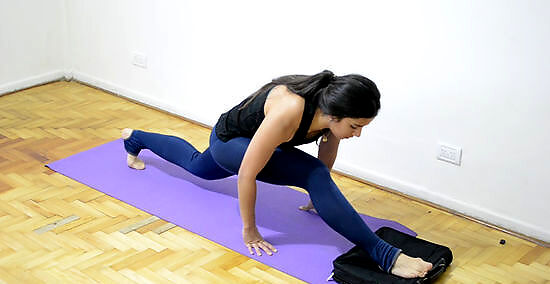
When you've mastered the splits, try the over split. Believe it or not, getting your legs to 180 degrees is not the most you can do when it comes to splits. By continuing to stretch, you can increase your flexibility to a point that you're able to bend your legs to an angle greater than 180 degrees. However, because this feat of flexibility is fairly extreme, care must be taken to prevent injury. To build up your ability to do a so-called "over split", start by performing a splits with a pillow on the ground next to you. Go into your split and put your heel on the pillow. You will be stretching just slightly further than in a normal split. Hold this as position as you normally would. As your flexibility gets better and better, you may gradually add pillows to increase the angle at which you flex. Be conservative - never add pillows until you're perfectly comfortable at your current level of flexibility.
Building Flexibility
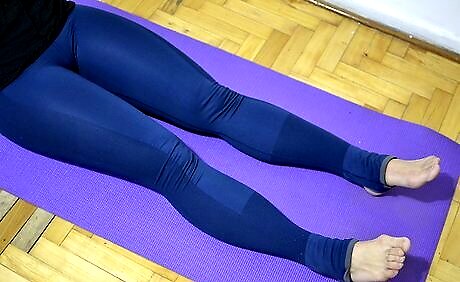
Know the muscles you need to stretch. Doing a split can appear deceptively simple. In actuality, this move requires a high level of flexibility in multiple muscle groups. The most important of these are the hamstrings and dorsal hip muscles (also called iliopsoas), however, stretching a wide range of lower-body muscles will ensure greater overall flexibility, lessening your risk of discomfort, pain, or injury. Additionally, this comprehensive stretching regimen prepares you to do both types of basic split - side splits and front splits. Besides the hamstrings and hip muscles, try to add stretches for as many of the following muscles as possible to your fitness routine: Lower back (lumbar region) Buttocks (glutes) Groin (especially valuable for side splits) Calves Quadriceps The stretching recommendations included the following steps in this section will target many of these secondary muscles. However, if desired, you may substitute your own preferred stretches.
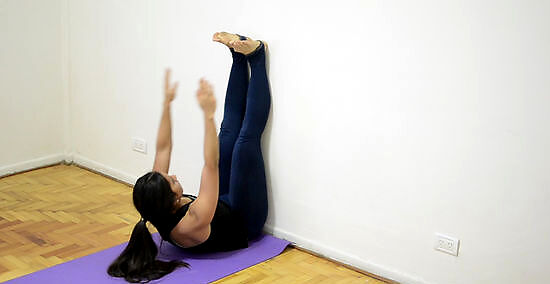
Do a hamstring stretch against the wall. This stretch will help your hamstrings and lower back. Lie on the floor next to a straight wall. Position yourself so that your body is pointing perpendicular to the wall. Raise your legs and place them as high as you can on the wall while keeping your lower back on the floor. Reach towards your toes with your hands - go as far as you can without excessive strain or pain. Hold for 30 seconds. Repeat 2-3 times.
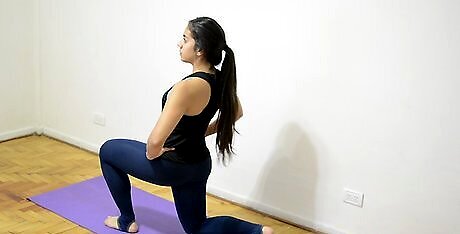
Do a lunge stretch. This stretch targets your hip muscles. Begin as if you were doing an ordinary lunge exercise - plant one foot forward and lower yourself down to the ground by bending your front leg and sliding your back leg back until your shin lies on the ground. When you've reached the floor, put your hands on your hips and gradually shift your weight forward, keeping your back straight. Continue until you begin to feel the stretch in the top of the thigh where it meets the hip. Hold for 20-30 seconds, then return to your starting position and switch to your other leg. Repeat several times.
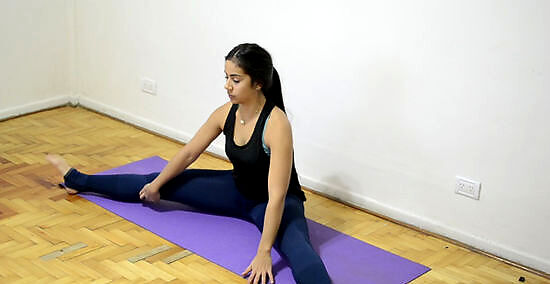
Do a seated V stretch. This stretch hits your hamstrings, lower back, and, if you can reach your toes, your calf muscles. Sit on the floor and spread your legs in a wide "V". Raise your hands over your head. Gently and gradually bend your upper body as you reach towards one of your feet. Stop when you notice pain or discomfort or stretching becomes difficult. Hold for 20-30 seconds, then return to the starting position and stretch towards the other leg. You may not initially be able to reach your toes. This is O.K. However, when you can reach your toes, you may grab your foot and gently pull it towards you to stretch your calf.
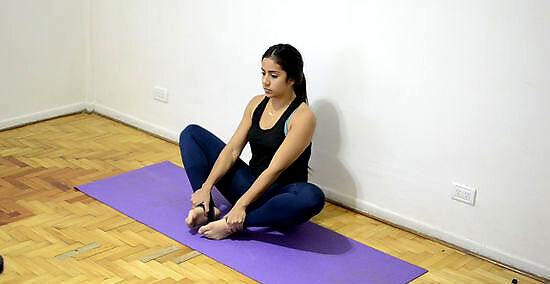
Do a butterfly stretch. This stretch mainly works your groin and inner thigh. Sit upright on the floor with your back straight. Don't slouch - if needed, you may sit against a wall. Bring your legs towards your body and press your feet together so that your legs make a diamond shape. Move your heels as close to your groin as you can without experiencing pain. You may also push your knees towards the ground with your hands for an added stretch, but use caution, as this can be somewhat hard on the knees. Hold this stretch for about 20 seconds, then rest and repeat.
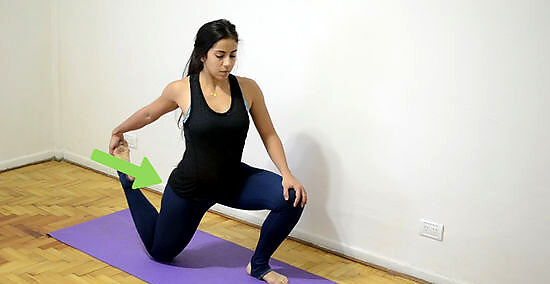
Do a quadriceps stretch. This aptly-named stretch mainly stretches your quadriceps - the large group of muscles on the front of your thigh. You'll need one or two pillows. Lower yourself into a kneeling position with your rear knee on the pillow(s). Raise your back foot, then, keeping your back straight reach back and grab it with your opposite hand. Gently pull your leg towards your bottom. You should feel a stretch in the front of your thigh. Hold for about 20 seconds, then switch legs. Alternatively, if you're worried about putting stress on your knees, you may do a standing quad stretch. Stand up straight, lift one leg up towards your bottom, then reach back and pull it with the arm that's on the same side. You may want to brace yourself against a wall with your other hand for balance.
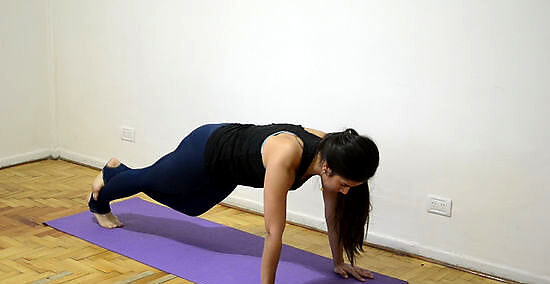
Do a calf stretch. Lay on your stomach on the floor. Raise yourself into a "plank" position - keep your back and legs aligned and support your upper body on your elbows and your lower body on your toes. Place one foot on top of the other so that you're balancing on one foot. Gently push back with your body weight until you feel a stretch in your foot and your calf. Hold for about 20 seconds, then switch feet and repeat. In addition to stretching out your calf muscles, you'll also get a light ab workout from holding the plank pose.



















Comments
0 comment